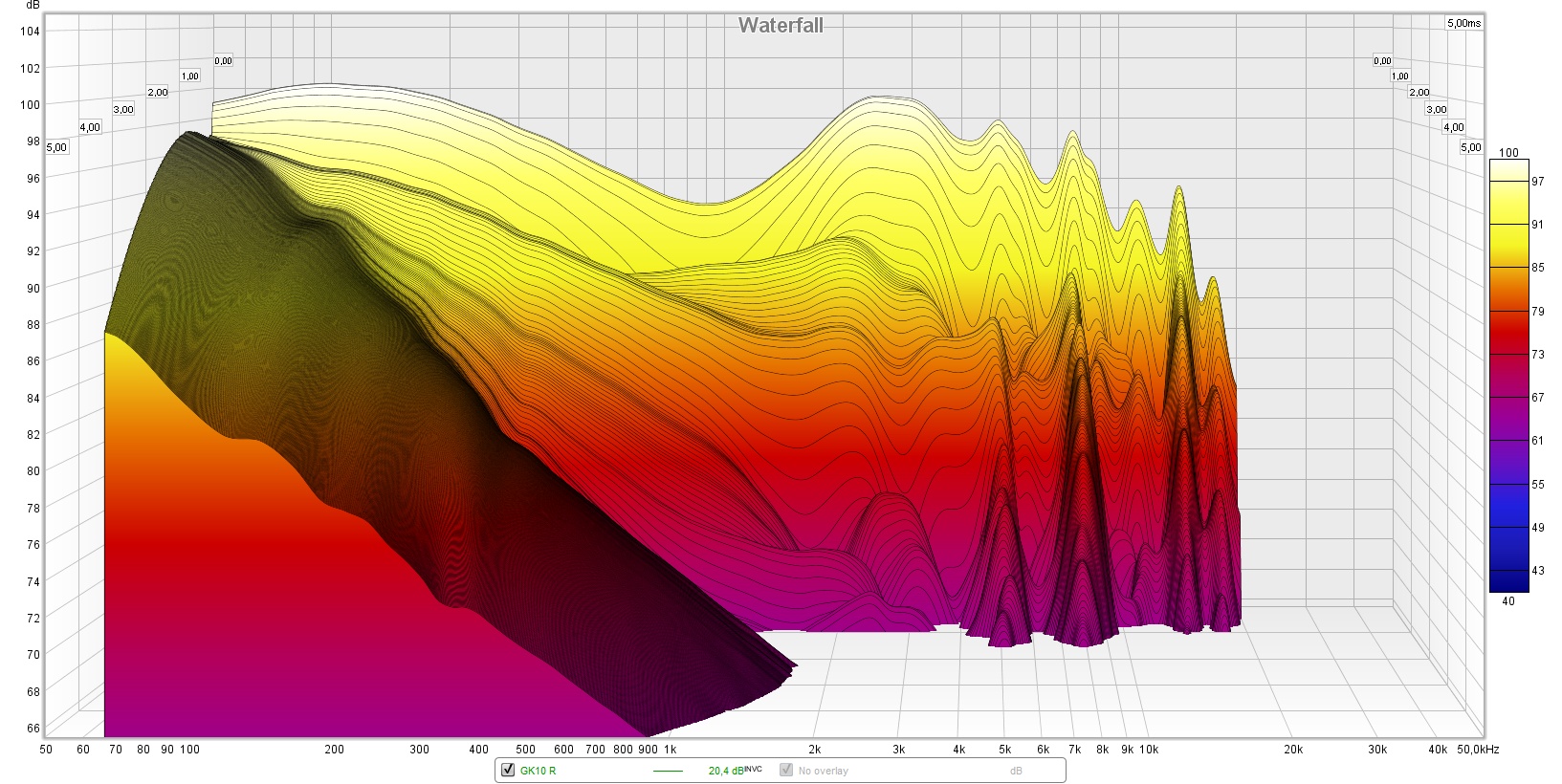Lamim Rashid
100+ Head-Fier
- Joined
- Oct 28, 2016
- Posts
- 242
- Likes
- 308
That probably explains why ba iems, and some DD iems sound less warm even when they look warm on graphs. The FDX1 is a great example of this, it probably has a very short decay compared to other DD iems because it sounds way less warm than my starfields even when I used the blue nozzle which should graph fairly close to warm, and try to eq the treble down, and lower frequencies up. The Kato is a better example, it's tuned almost the same as the starfields but still sounds way less warm, probably because it decays faster. Ba iems are already known to decay very fast so there isn't much surprise there. I wonder if it's possible to get the best of both worlds, a natural but fast decay that neither decays faster or slower than the sound is intended to, while still sounding warn.Waterfall plots for frequency response over time from full volume white noise to discontinuation of playback and the end of decay are my favorite way to visualize how something sounds. Usually, warm tuning means that you get extended decay. Brass is frequently used for this purpose because it is a naturally resonant metal, so you get the effect of extending decay slightly through chamber resonance. With waterfall plots, you get to see how the FR changes over the milliseconds after the signal is cut from the source and you get to watch how each individual driver behaves as it returns to its nominal state. You can see how well damped each driver is, how they interfere at crossover points, and how the IEM's internal structure design or material choices can create internal resonance, which leads to constructive or destructive interference and colors the sound.
On another note, I have no idea how to read waterfall graphs, or what to look for. The veedix silver string has a waterfall graph, heck it even shows partials in the fr curve graph but I still have no idea what to make of any of it.
This actually adds an interesting dimension to things, we've all been testing for burn in with just regular graphs, but what if it's only noticable in waterfall graphs? Same thing with cable differences, something like the skin effect would be a lot more noticable in waterfall graphs if it exists. No idea what the actual truth is so I don't have an opinion on those topics other than that I think it would be cool to have tested since I don't really trust human perception too much.
I think im going to pickup an iec711 coupler during 11/11 sales if nothing else. Would be fun to graph my iems and experiment a bit. Does anyone know if the coupler can make waterfall graphs? Sounds like it should be able to as long as the software can.
Last edited:

























